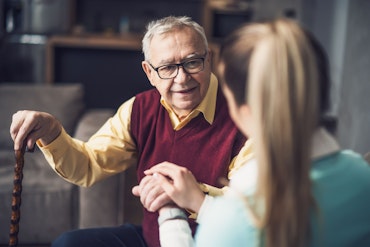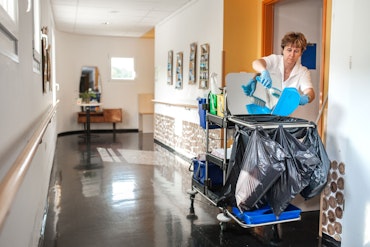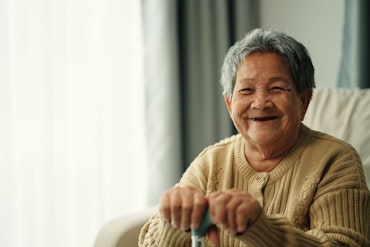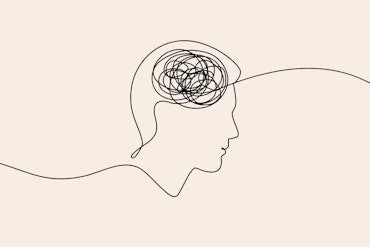COVID-19 and what you need to know about protective equipment
Personal Protective Equipment (PPE) has become a huge topic in Australia as the country is battling the COVID-19 outbreak. There is a lack of supplies available for health professionals and aged care workers, and the general public has been scrambling to get their hands on any form of masks and PPE.
![<p>The Department of Health has said unless you are working or taking care of someone who has COVID-19, you don’t need to wear a mask or other PPE. [Source: Shutterstock]</p>](https://agedcareguide-assets.imgix.net/news/articles/PPE.jpg?fm=pjpg&format=auto&w=550&q=65)
The Department of Health has said unless you are working or taking care of someone who has COVID-19, you don’t need to wear a mask or other PPE. [Source: Shutterstock]
Many Australians are wondering if they should cover their nose and mouth with a mask to reduce the risk of contracting the virus and the advice whether to mask or not to mask has been conflicting.
Recently, Prime Minister Scott Morrison announced during a Parliamentary sitting that three million masks had arrived in Australia from overseas.
While that seems like a large number of masks and a big win for healthcare workers who are combating the coronavirus, these masks that are required for staff working in hospitals and aged care facilities need to be discarded daily to be effective in protecting the wearer and others who they come into contact with.
So what is PPE, why is it important and should you be using it?
What is PPE?
Personal Protective Equipment, commonly known as PPE, is anything worn or fitted to a person to protect themselves from injury or infection. In the case of COVID-19, PPE is being utilised to prevent the transmission and transferral of the virus.
PPE gear can include gloves, caps, aprons, masks, full protective suits, face shields and glasses.
Commonwealth Scientific and Industrial Research Organisation (CSIRO) researchers, who are currently working on a cure for the coronavirus, are utilising the highest level of containment gear – full protective suits with an integrated helmet, face shield and a compressed air supply.
PPE can prevent the body from breathing in the virus through the mouth or nose via masks, and can also stop the physical transferral of the virus from hard services through the use of disposable gloves or clothes. Additionally, a mask can prevent you from touching your face and spreading the virus from your hands to your mouth and nose.
Is the equipment important and should I be using it?
For healthcare and aged care workers, this protective gear is incredibly important to prevent any transmission of the virus from one person to another.
However, the Australian Government and Department of Health say the general public does not need to wear any form of PPE.
In a recent Older Persons Advocacy Network (OPAN) webinar, Alison McMillan, Chief Nursing and Midwifery Officer of the Australian Government, confirmed that PPE is only necessary for people that are working with cases of COVID-19.
She adds that it is important for the general community not to buy PPE, so these supplies can be utilised by healthcare professionals.
PPE protects the user and reduces their risk of contracting the disease, and also reduces the risk of the wearer from passing on the virus if they have it. PPE equipment should be utilised by medical professionals that are directly exposed to confirmed patients who have COVID-19.
It can be difficult to determine whether to wear the gear.
Minimising the spread of the virus is important, but it can be hard because COVID-19 can affect people differently, especially if people are asymptomatic (showing no symptoms) of the virus.
For preventative safety, healthcare, aged care or home care workers may be wearing the equipment just in case, because you may never know who has the virus until it is too late.
If you are a carer, or informal carer, and you are looking after an older person or someone who is in a vulnerable group, the best cause of action would be to limit your outside contact with others and to strictly follow hygiene and social distancing measures.
Professor Mullins says, “The best thing carers can do is stay with the person they are caring for as much as possible and minimise any contact that is likely to cause potential for them to be infected. PPE is generally considered the last strategy in dealing with these sorts of things.
“You really need to consider on a case by case basis of what you need to do to best protect a person and make sure you don’t pass anything to the person you are taking care of.”
Wearing PPE and how they should be used
A virus like COVID-19 is unique in the sense that it cannot only enter your body through your respiratory system, but can potentially infect someone through their eyes.
Eye protection like goggles, face shields, eye shields, and other eyewear can protect the mucous membranes in your eyes from penetrating fluids. For instance, if some sneezed large droplets that were infected this could potentially make contact with someone’s eye and the virus could enter the body.
The virus could also penetrate your eyes through touching your own face and eyes. If you have unwashed hands, this could further spread the virus, which is why it is so important to wash your hands regularly and not touch your face.
Keep in mind that regular glasses or sunglasses are not considered a safe barrier to viral droplets.
Safety glasses that provide a seal around the sides of your eyes and over the bridge of your nose and undereye are the best protection.
Some experts have suggested that people that wear contact lenses should make the switch to glasses during the epidemic, however, there is no evidence to prove that people who wear contact lenses have an increased likelihood of contracting the virus.
Clothing related PPE, like gowns, aprons, gloves, head coverings and shoe covers, protect the skin, clothes and hands of a wearer.
Because there is the chance that the virus lands on this equipment, the PPE should be discarded afterwards to protect the wearer.
When wearing PPE, if a person is taking care of an individual with COVID-19, or a suspected case, all of their jewellery should be removed before donning PPE.
An isolation gown is likely to be used by medical professionals if there is a higher risk of COVID-19 contamination, whereas an apron would be used if there is a low risk of coronavirus contamination.
When wearing gloves, you should be performing hand hygiene before and after you remove gloves.
Gloves should also cover the sleeves of a gown if you are wearing one.
Keep in mind that gloves only provide a certain level of protection from contamination, which is why it’s important to stick to hand hygiene protocols.
The NSW Health Department recommends removing gloves that become contaminated with fluid immediately and replacing them with new gloves. This includes undertaking appropriate hand hygiene before putting on the new gloves.
The World Health Organisation (WHO) is not sure how long the virus lasts on surfaces, but similar to other coronaviruses, it is likely that the COVID-19 virus will survive on surfaces from a few hours or up to a few days. So the same can be said for the disposal of PPE, which should be changed often and in-between cases of people with COVID-19 or older people receiving care.
For more information about wearing PPE, head to the NSW Health Department website.
What masks should I be wearing?
Associate Professor Ben Mullins from Curtin University’s School of Public Health has 20 years experience in researching filters and respirators as an engineer.
He says if people do decide to use PPE, they need to wear the correct masks. There are two respiratory masks that provide the best protection for this situation.
P2 respirator masks
N95 respirator masks
These masks are designed to capture at least 95 percent of test particles at breathing rates or airflow rates. A mask should be the right size for you and when properly worn, cover both your nose and mouth and have a good seal all around. To wear a mask properly, a male would need to be completely clean shaven, otherwise there is not a clear seal around the face.
“[These masks] will give you, if it is new and well looked after, it will give you around 95 [percent] plus protection from inhaling the coronavirus as long as it is worn correctly and it has a proper seal around your face,” explains Professor Mullins.
However, he adds that no mask or respirator is perfect.
There were reports early on that people were buying up P2 masks or respirators from hardware stores. However, these sorts of construction or trade related masks are not designed to protect individuals from viruses.
The hardware store masks protect their wearers from industrial aerosols when doing trade work and have an exhalation valve. So if you were infected with COVID-19, you would potentially spread the virus.
Additionally, the common square masks that you may be seeing worn by people in public offer little protection to the wearers. These masks are good for catching droplets from the individual wearing it, however, it doesn’t not have a safe enough seal to prevent virus aerosols from entering the mask.
Can you reuse masks?
For P2 or N95 or other PPE equipment in cases where individual wearers are coming into direct contact with COVID-19, then this equipment should be disposed of daily.
While it is possible to wash PPE equipment, in cases of masks, everytime they are used, the efficiency of the mask reduces.
You are able to wash P2 or N95 masks, but if there is no way to test whether the virus is completely eradicated from the device, it would be ill-advised to utilise the mask again.
Each respirator mask also has a special filter media, these enhance the safety of the masks through an electrostatic charge on the filter media.
Professor Mullins explains, “That charge is then degraded as soon as a mask starts being used, once they reach the end of their suspected lifespan, given they are disposable, that charge will largely be negated and will not work as well.
“The other thing is, if you use them for too long or reuse them when they are still damp with exhaled droplets, then they can become effective at spreading whatever aerosol they have captured, which may or may not contain the coronavirus, that is another concern.”
Professor Mullins says it would be a last resort scenario for medical professionals to be utilising these masks more than once.
Lack of PPE in Australia
PPE has become a big topic in Australia because of the lack of available equipment for healthcare workers and aged care workers.
It was reported that around 80 aged care providers have asked the Government for access to the emergency stockpile of personal protective equipment.
Professor Mullins says the biggest reason for lack of mask protection is due to manufacturing issues. There are only a number of mask manufacturers in Australia, and, to his knowledge, there is no manufacturing of the filter media for masks in the country.
Last week, the Government banned any export on PPE equipment, such as masks and face shields, because of the domestic shortages.
And while this week around 3 million masks have arrived, since they are required to be disposed of so often, healthcare and aged care workers will need a steady supply of masks and other PPE gear to continue keeping themselves and others safe for the next few months.
“I think, going forward, the aged care facilities need to consider what they need to keep on hand, whether the past practices of stocking this equipment have been sufficient. Already, there have been a number of deaths in aged care, which is quite tragic,” says Professor Mullins.
“At this stage, my understanding is that all of the aged care facilities are more or less locked or closed to visitors.
“So, as long as the carers working in those facilities are undergoing appropriate social isolation, then the risks should be fairly low, but obviously this is something we need to address as soon as possible, this will hopefully be addressed by the recent announcements of new supplies on the way.
“There might need to be some changes in stocks that are being kept both Federally and by aged care facilities going forward.”
For more COVID-19 related information, visit the Aged Care Guide’s COVID-19 update page.
Do you have any questions about the coronavirus that you want answered? Tell us in the comments below or email journalist@dps.com.au.























